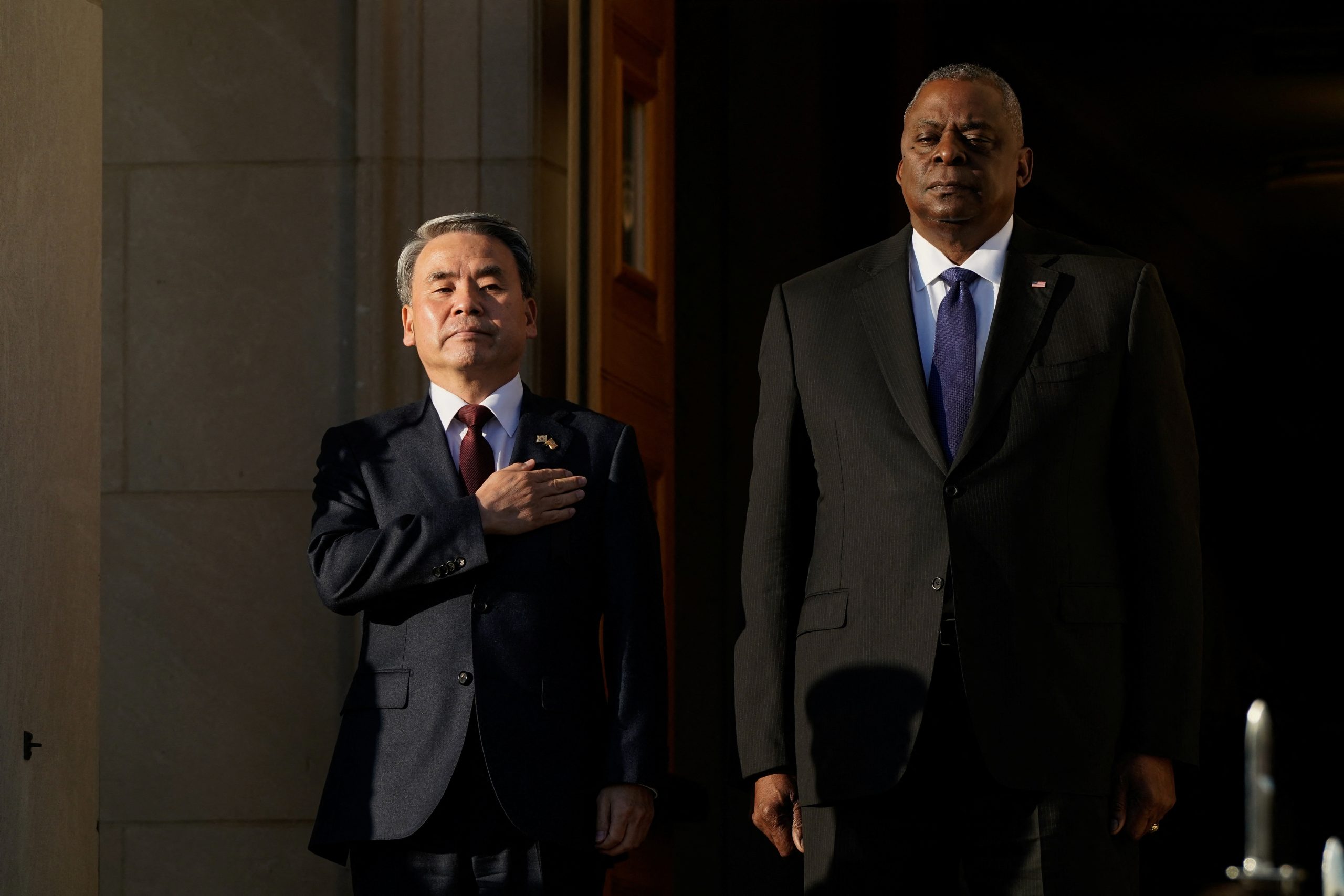
Lauren C. Moye, FISM News
[elfsight_social_share_buttons id=”1″]
The U.S., with the backing of other nations, has requested a public United Nations Security Council (UNSC) meeting today after a barrage of over 100 North Korean-fired missiles has escalated tensions in East Asia this week.
Britain, France, Albania, Ireland, and Norway backed this meeting, diplomats said.
Defense Secretary Lloyd Austin also announced the extension of joint air drills with South Korea yesterday, naming North Korea’s “illegal and destabilizing launch of an intercontinental ballistic missile” as one reason for the extension.
The training exercises, according to Austin, are to bolster the joint nation’s “readiness and interoperability” amid continued provocation from the North.
North Korea responded by saying the extension of these drills was “very risky” and a wrong decision. State-owned news agency KCNA reported that “the countries will come to know what a terrible mistake they have made.”
Since the U.S. first requested the meeting, North Korea has further escalated tensions in the Korean Peninsula. Around 80 artillery rounds were fired by the nation last night alone.
Then between 11 a.m. local time (10 p.m. EST) and 3 p.m., Seoul detected 180 North Korean warplanes flying just north of the Military Demarcation Line that marks the border between the two Koreas. According to local news reports, these flights happened between 12 to 31 miles from the line.
Seoul scrambled 80 military aircraft including stealth fighters in response. Meanwhile, Japanese citizens were warned to take shelter.
Before the events of the last 24 hours, the petition for the UNSC meeting was prompted by the sheer volume of missile launches from different areas of North Korea.
This included 23 missile launches on Wednesday, which represented a daily record for the nation. One of these missiles landed off the coast of South Korea.
The possible failed intercontinental ballistic missile (ICBM) launch on Thursday is also a notable concern.
ICBMs are chiefly used to deliver nuclear warheads and have a range between 3,400 miles and 6,2000 miles. Modern ICBMs can carry more than one nuclear warhead and can be launched from mobile platforms, making them more difficult to detect.
Pyongyang’s first successful testing of a Hwasong-14 ICBM occurred in July 2017.
The UNSC has banned North Korea from conducting nuclear tests and missile launches for years. This has included tightening sanctions throughout the years to starve funding for the program. It previously passed resolutions after North Korea conducted nuclear tests in 2006, 2009, 2013, 2016, and 2017.
A more recent push for increased sanctions, spearheaded by the U.S. failed, however, when China and Russia vetoed the resolution in an apparent referendum against the West at large for opposing their expansion efforts.
North Korea has vehemently protested the joint air drills between the U.S. and South Korea known as “Vigilant Storm.” The drills involve more than 200 aircraft and were originally scheduled to end today before being extended by U.S. Defense Secretary Lloyd Austin and the Republic of Korea Minister of National Defense Lee Jong-sup. The two consulted on Thursday and agreed on the extension due to ramped-up provocation by North Korea.
However, some experts believe that North Korea would have increased missile launches this year regardless of military drills in Seoul.
Both joint training exercises and artillery shells have intermittently occurred this year, including a similar exchange in October and a Pyongyang-fired ballistic missile to protest Vice President Kamala Harris’s visit to the South.
